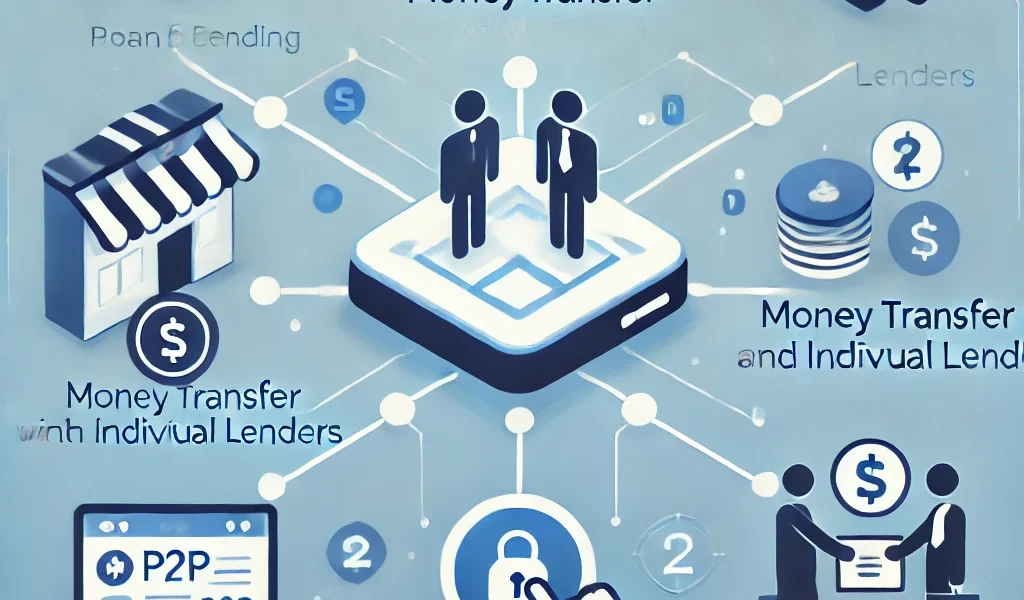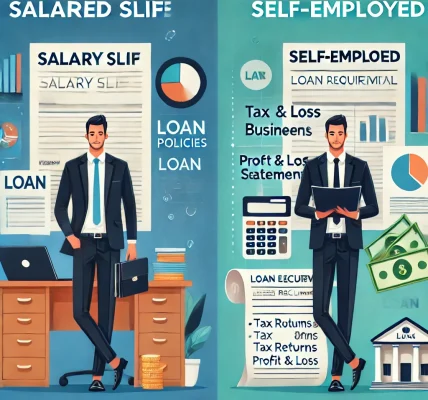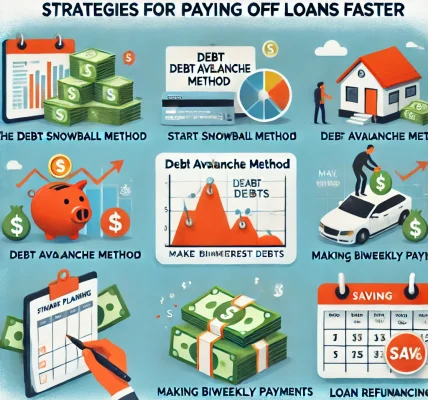Introduction
In the evolving financial landscape, Peer-to-Peer (P2P) lending has emerged as a revolutionary alternative to traditional bank loans. By directly connecting borrowers with individual lenders via online platforms, P2P lending eliminates intermediaries, often resulting in lower interest rates and more flexible loan terms. This financing model is particularly attractive to individuals and small businesses who may struggle to secure loans through traditional banks.
This blog explores how P2P lending works, its benefits, risks, and how it compares to traditional lending, helping you determine if it is the right financing option for you.
What is Peer-to-Peer Lending?
Peer-to-Peer (P2P) lending is a decentralized form of lending where individuals or businesses borrow money directly from investors instead of financial institutions. These transactions occur on P2P lending platforms, which act as facilitators by assessing borrower creditworthiness, setting loan terms, and managing repayments.
How P2P Lending Works
- Borrower Application: A borrower applies for a loan on a P2P lending platform, specifying the required amount and purpose.
- Risk Assessment: The platform evaluates the borrower’s credit profile and assigns an interest rate based on risk.
- Investor Funding: Individual investors review available loan requests and decide how much to lend.
- Loan Disbursement: Once the required amount is funded, the borrower receives the loan.
- Repayment: The borrower repays the loan in installments, and investors receive returns based on the agreed interest rate.
Some popular P2P lending platforms include LendingClub, Prosper, Upstart, and Funding Circle.
Benefits of P2P Lending
P2P lending offers several advantages compared to traditional bank loans.
For Borrowers:
✅ Easier Loan Approval: Less stringent eligibility criteria make it accessible for individuals with lower credit scores or limited credit history. ✅ Lower Interest Rates: Without traditional bank overhead costs, borrowers often secure lower interest rates than banks offer. ✅ Quick Processing: Online platforms streamline the application and approval process, often disbursing loans faster than banks. ✅ Flexible Loan Terms: Borrowers can negotiate repayment schedules that suit their financial situation.
For Investors (Lenders):
✅ Higher Returns: Investors can earn higher interest rates compared to traditional savings accounts and bonds. ✅ Portfolio Diversification: Spreading investments across multiple loans minimizes the risk of default. ✅ Direct Control: Investors choose the borrowers they fund, giving them more control over their investments.
Risks of P2P Lending
While P2P lending has benefits, both borrowers and investors should be aware of potential risks.
For Borrowers:
❌ Higher Interest Rates for High-Risk Borrowers: While rates can be lower than traditional loans, those with poor credit may still face high interest costs. ❌ Limited Loan Amounts: Unlike banks, P2P platforms may impose lower borrowing limits, restricting large funding needs. ❌ Impact on Credit Score: Defaulting on a P2P loan affects credit scores just like a traditional loan.
For Investors:
❌ Risk of Default: Borrowers may default on repayments, leading to financial losses for lenders. ❌ No Government Protection: Unlike bank deposits, P2P loans are not insured by the government, making them riskier investments. ❌ Market Fluctuations: Economic downturns can impact borrower repayment capacity, increasing default risks.
P2P Lending vs. Traditional Loans
| Feature | Peer-to-Peer Lending | Traditional Bank Loan |
|---|---|---|
| Loan Approval Process | Faster, less strict | Longer, more rigorous |
| Interest Rates | Often lower | Can be higher |
| Eligibility Criteria | More flexible | Strict requirements |
| Loan Amount | Limited funding | Higher loan amounts |
| Security | No collateral needed for most loans | Often requires collateral |
| Risk Factor | Higher for investors | Lower for banks |
Who Should Consider P2P Lending?
✅ Ideal for Borrowers Who:
- Have difficulty securing loans from banks.
- Need quick access to funds with flexible terms.
- Prefer dealing with individual investors rather than institutions.
✅ Ideal for Investors Who:
- Want higher returns than traditional savings accounts.
- Are willing to take some risk for potential higher rewards.
- Prefer diversified investments across multiple loan categories.
How to Get Started with P2P Lending
For Borrowers:
- Research Platforms: Compare interest rates, terms, and borrower eligibility criteria across platforms.
- Check Credit Score: A higher credit score improves chances of approval with better rates.
- Apply Online: Fill out an application, provide necessary documents, and submit for approval.
- Review Offers: Choose from available investor offers and finalize loan terms.
- Repay Responsibly: Make timely repayments to avoid penalties and credit score damage.
For Investors:
- Choose a Platform: Select a reputable P2P lending platform that aligns with investment goals.
- Assess Risk Levels: Diversify investments across multiple loans to mitigate default risks.
- Set Investment Amounts: Determine how much to lend per borrower.
- Monitor Portfolio: Regularly track loan performance and reinvest earnings to maximize returns.
Conclusion
Peer-to-Peer lending is reshaping the lending industry by offering borrowers a faster, more accessible loan option and providing investors with a lucrative investment opportunity. However, like any financial decision, it’s essential to weigh the benefits and risks before engaging in P2P lending.
For borrowers, P2P lending can be a game-changer in securing loans with favorable terms. For investors, it presents an opportunity for higher returns but comes with a greater risk of default.
As P2P lending continues to grow, it could become an integral part of modern finance, providing an alternative to traditional lending while empowering both borrowers and lenders with greater financial control.



